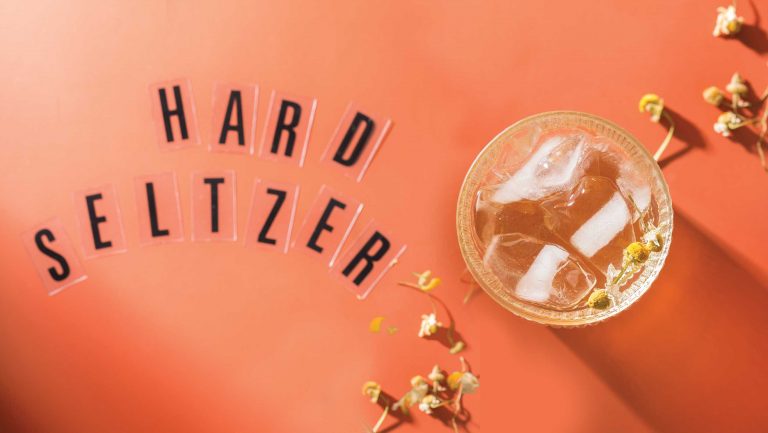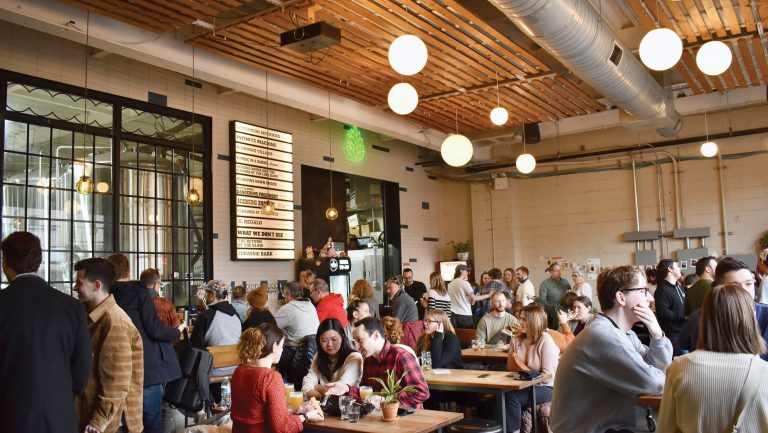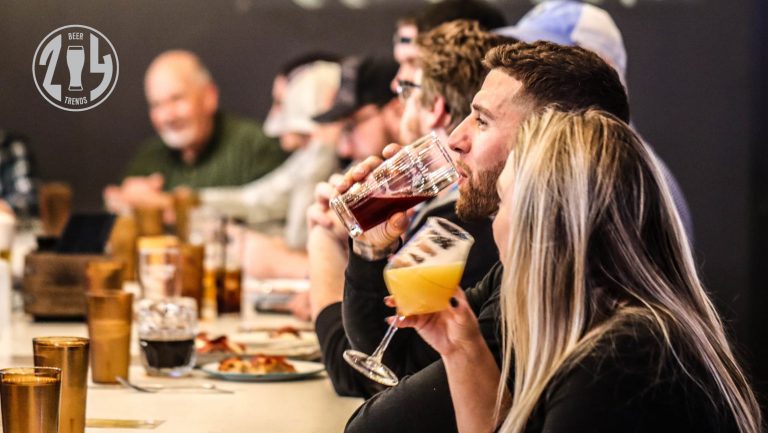On Tuesday, February 22, at 2:22 p.m., Seventh Son Brewing opened its Columbus, Ohio, taproom to sell a beer named Tu Tu. On that even-numbered day, Tu Tu stood out as an oddity: a West Coast IPA that wasn’t overly bitter.
Two of the West Coast IPA’s defining elements are clarity and ample bitterness. To brew Tu Tu, Seventh Son brewmaster Colin Vent dampened bitterness by using Simcoe and Cascade forms of Cryo Hops, which impart massive aromatics with scant astringency. “You up the oomph and the herbal bite is diminished,” says Vent.
Throughout the early 2000s, Southern California breweries popularized IPAs that minimized malt richness and supersized citrusy, resinous, and piney hops. Over time, breweries nationwide began making West Coast IPAs with amplified bitterness and alcohol. Around the mid-2010s, Northeast breweries responded with hazy IPAs featuring fruity Citra and Mosaic hops. Bitterness became barely perceptible.

Don’t miss the latest drinks industry news and insights. Sign up for our award-winning newsletters and get insider intel, resources, and trends delivered to your inbox every week.
Tu Tu has pleasant bitterness, dank pungency, and a clear appearance, a pointed contrast to most every hazy IPA. With thousands of breweries making a similar version of the smooth, fruity hazy style, “at a certain point, it becomes the same low hum of flavor that blurs together,” says Vent. “You want to see that bitterness come back.”
In brewing, as in life, history is repetitive. Hazy IPAs succumbed to familiar patterns of excess and ubiquity, leading breweries to reverse course toward a familiar destination. By revisiting and revamping the West Coast IPA, breweries are finding a little bitterness can be a sweet sales tool.
A Bitter Shift Is Good for Business
Ten years ago, well-bittered West Coast IPAs were so commonplace that some breweries didn’t bother brewing one. Orpheus Brewing in Atlanta opened in 2014 with an early focus on farmhouse and sour ales. “I didn’t think it would ever be essential that I make a [West Coast IPA],” says brewmaster Jason Pellett.
Orpheus saw success with the Transmigration of Souls Double IPA, now in the core lineup, followed by further IPA experiments. Last summer, Orpheus released a one-off West Coast IPA, redolent of stone fruits and citrus peel, called The Inevitable End. Closure never came. The West Coast IPA sold so well that, in February, Orpheus made it a year-round staple. “[It] has consistently been our top seller,” says Pellet, noting that it fills a local void for a fresh West Coast IPA, the bitterness cutting through the hazy pack.
Bicycle-themed Rouleur Brewing opened in Carlsbad, California, in 2017, and its Dopeur Juicy IPA has historically been its best seller. In the last six months, Rawley Macias, the founder and head brewer, has seen Dopeur sales plateau. On the flip side, sales of the brewery’s dry and smoothly bitter West Coast IPA, Endo, have grown. “A West Coast IPA can be a better showcase for hops,” says Macias, as it allows for a greater range of aromas and flavors.
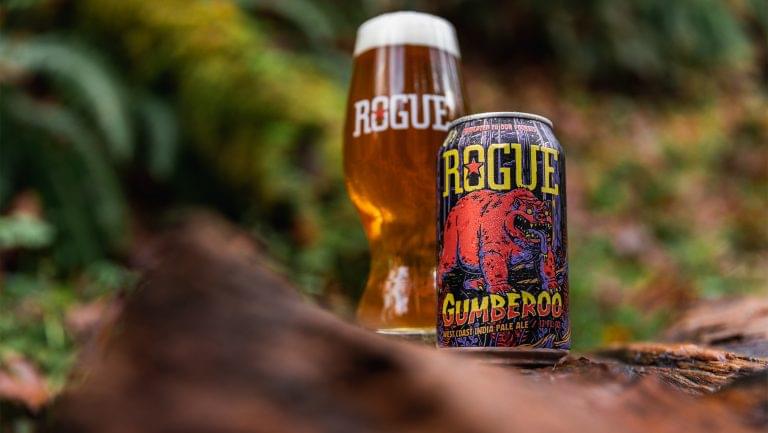
Breweries are also using West Coast IPAs to broaden their portfolio. At the start of 2019, Rogue Ales & Spirits released a hazy IPA called Batsquatch that was “instantly super popular,” says communications director Amanda Zessin. It sparked the Monsters of IPA series that now includes imperial IPA Colossal Claude. This February, Rogue debuted the third Monster, Gumberoo, that’s a West Coast IPA. The choice was easy.
“We’re seeing a demand for that traditional West Coast piney and hoppy IPA,” says Zessin.
Updating West Coast IPAs With Modern Ingredients
West Coast IPAs once marketed aggressive bitterness as excellence. But turning up bitterness can be a turnoff. To overhaul the West Coast IPA, breweries are employing cutting-edge hops, ingredients, and brewing techniques.
Stalwart San Diego brewery AleSmith recently introduced Party Tricks, a contemporary West Coast IPA with lessened bitterness and loads of trendy hops, including Strata and El Dorado, that impart scents of strawberry and passionfruit. “It’s kind of like this recursive effect,” says quality manager Peter Cronin. “The new West Coast IPAs coming out certainly learned from hazy IPAs.”
Earlier this year, Oskar Blues released Western Mutant, a West Coast-style IPA that’s the first beer in its new IPA series. Juice Drapeau, the senior head brewer at the Lyons, Colorado, pilot brewery, tinkered with water chemistry and concentrated hop extracts to build an IPA with a “cleaner and more palatable bitterness,” he says.
Fifteen years ago, Firestone Walker released Union Jack, its flagship West Coast IPA known for its generous bitterness. About a year ago, the Paso Robles, California, brewery set out to create what brewmaster Matt Brynildson calls the “ultimate new-school expression of the West Coast IPA.”
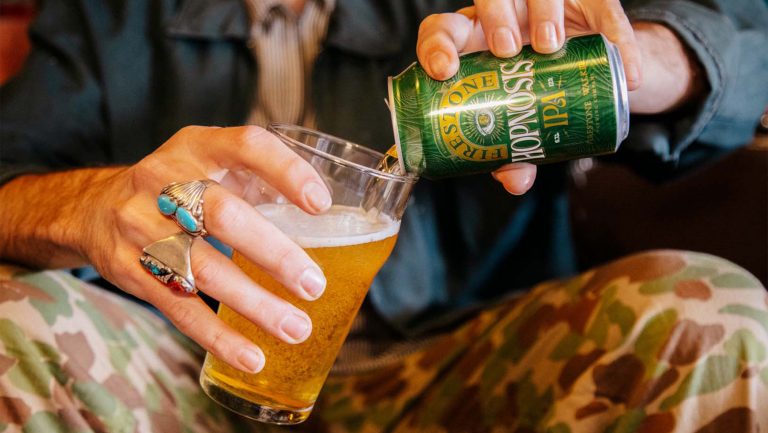
To make Hopnosis, a year-round beer first released in February, Firestone Walker settled on a blend of New Zealand and Pacific Northwest hops, including Mosaic Cryo Hops, and swapped its house British ale yeast for a lager strain—a clean platform for hop expression. “I’m still calling it an IPA because it’s a warm fermentation and it’s hopped in such a way that it’s clearly an IPA,” he says. “There’s no getting around it.”
Rebooting the West Coast IPA can come with baggage. “A tougher thing with IPAs is categorizing them too much,” says Steve Breezley, the brewmaster and COO at Ska Brewing in Durango, Colorado. The brewery makes Modus Hoperandi, an “old-man bitter” IPA, plus a range of hazy IPAs.
This year, Ska introduced an IPA that’s fairly clear, full of tropical fragrances, and gently zapped with piney bitterness. It remixes the past and the present for a Checkered Future, as the style-free beer is called. “It’s an IPA,” says Breezley. At the same time, “we do want to make it clear that it’s not a hazy IPA.”

Dispatch
Sign up for our award-winning newsletter
Don’t miss the latest drinks industry news and insights—delivered to your inbox every week.
Contributing editor Joshua M. Bernstein is a beer, spirits, food, and travel journalist, as well as an occasional tour guide, event producer, and industry consultant. He writes for the New York Times, Men’s Journal, New York magazine, Wine Enthusiast, and Imbibe, where he’s a contributing editor in charge of beer coverage. Bernstein is also the author of five books: Brewed Awakening, The Complete Beer Course, Complete IPA, Homebrew World, and Drink Better Beer.



